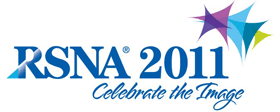
Abstract Archives of the RSNA, 2011
SST14-07
Pediatric Percutaneous Nephrostomy: A Single Institutional 6-year Retrospective Experience
Scientific Formal (Paper) Presentations
Presented on December 2, 2011
Presented as part of SST14: Pediatrics (Interventional)
Allison Starr Aguado MD, Presenter: Nothing to Disclose
Matthew Christman MD, Abstract Co-Author: Nothing to Disclose
Marc Sheldon Keller MD, Abstract Co-Author: Stockholder, General Electric Company
Stockholder, Johnson & Johnson
Stockholder, Laboratory Corporation of America Holdings
Stockholder, Pfizer Inc
Stockholder, UnitedHealth Group
Stockholder, Endo Pharmaceuticals Holdings Inc
Stockholder, GlaxoSmithKline plc
Stockholder, Stericycle, Inc
Stockholder, Teva Pharmaceutical Industries Ltd
Stockholder, Cardinal Health, Inc
Stockholder, CVS Caremark Corporation
Stockholder, Schering-Plough Corporation
Ganesh Krishnamurthy MD, Abstract Co-Author: Nothing to Disclose
Els L.F. Nijs MD, Abstract Co-Author: Nothing to Disclose
Anne Marie Cahill MBBCh, Abstract Co-Author: Nothing to Disclose
To describe a single institution’s experience with pediatric percutaneous nephrostomy tube placement.
This is a retrospective IRB approved study which analyzed 83 nephrostomy procedures performed on 65 children over a 6 yr period. Retrospective chart review was performed for indications, techniques, outcomes, and complications.
Indications included calculus (31/83), UPJ obstruction (18/83), ureteral stricture (12/83), obstructive pyelonephritis (7/83), pelvic mass (4/83), UPJ with recurrent stenosis (3/83), postsurgical obstruction (3/83), posterior urethral valves (2/83), congenital UVJ obstruction (2/83), and obstructed dysplastic kidney (1/83).
The average age of the patient group was 10.8 yrs (range 1d-48yrs). 29% of the procedures (24/83) were performed on patients less than 6 months old.
81/83 (98%) procedures were successful. 2/83 procedures failed due to extensive calculi. Nephrostomy tubes were placed as follows; right 24, left 35, bilateral 7, and 8 in transplant kidneys using US guidance in 80/81 procedures. The catheters placed included: 6F Dawson Mueller (25/81), 7F Dawson Mueller (16/81), 8.5F Dawson Mueller (13/81), 8.5F MPD (4/81), 10.2F MPD (1/81), 5F NU (1/81), and 8.5F NU (21/81). There were no immediate post-procedure complications or infections. 1/81catheters was dislodged 16 days post placement. One catheter was removed in the OR for an abnormal course. 18/83 catheters underwent catheter exchanges, 5 in IR and 13 in the OR. The indications for IR exchanges were peri-catheter leakage (4/5) and elective exchange pre discharge (1/5). OR exchanges were performed for related therapeutic procedures in (12/13) and repositioning (1/13). Catheter removal data was available for 77/81 catheters. Two patients were lost to follow-up, and 2 transferred care to other facilities. The average indwelling time of nephrostomy catheters was 40.1days (range 1-189d).
This will be the largest study to date describing pediatric percutaneous nephrostomy tube placement.
In our experience, percutaneous nephrostomy is technically feasible with high success rates and low complications rates in the pediatric population.
Aguado, A,
Christman, M,
Keller, M,
Krishnamurthy, G,
Nijs, E,
Cahill, A,
Pediatric Percutaneous Nephrostomy: A Single Institutional 6-year Retrospective Experience. Radiological Society of North America 2011 Scientific Assembly and Annual Meeting, November 26 - December 2, 2011 ,Chicago IL.
http://archive.rsna.org/2011/11015461.html

